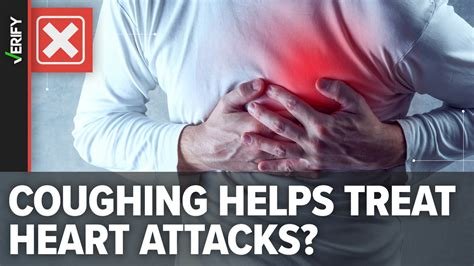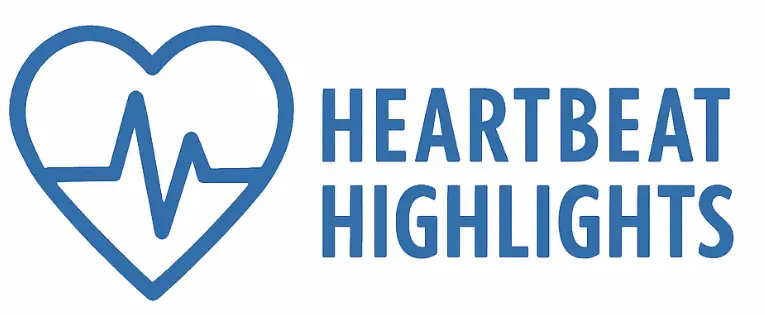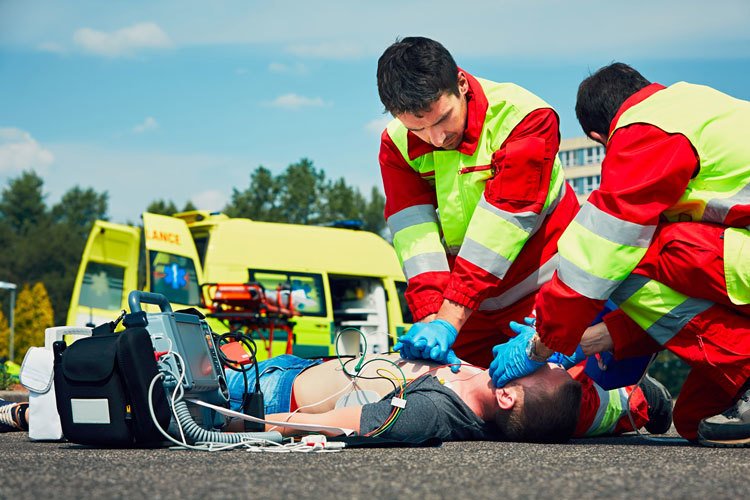The viral “cough CPR” trick could cost you precious minutes — here’s what really works when every second counts.

Introduction: A Dangerous Myth in the Age of Virality
You’ve probably seen it — a well-meaning friend shares a social media post claiming that if you feel a heart attack coming on, you can save your life by coughing hard, repeatedly, and rhythmically until help arrives.
The instructions usually go something like: “If you feel faint or your chest hurts, cough vigorously to keep blood flowing until your heart resets itself.”
It sounds simple, quick, and reassuring. But here’s the truth: this so-called “cough CPR” is not a substitute for calling emergency services, and relying on it could be deadly.
Today, we’re going to break down exactly where this myth came from, why it keeps spreading, and what you should do if you or someone near you is having a heart attack.
Understanding the Basics: Heart Attack vs. Cardiac Arrest

Before we unpack the “coughing hack,” it’s important to clear up two terms people often confuse: heart attack and cardiac arrest.
- Heart Attack (Myocardial Infarction): Happens when blood flow to part of the heart is blocked — usually by a clot in a coronary artery. The heart muscle is starved of oxygen and begins to die if not treated quickly. Symptoms can include chest pressure, shortness of breath, sweating, nausea, and pain that radiates to the arm, neck, jaw, or back.
The heart usually keeps beating during a heart attack, at least initially. - Cardiac Arrest: This is when the heart suddenly stops beating effectively — often due to an electrical problem like ventricular fibrillation. Blood flow to the brain and organs stops, and the person collapses, stops breathing, and loses consciousness. Without CPR and defibrillation, death can occur within minutes.
The “cough CPR” myth tries to merge these two distinct events, and that’s part of why it’s misleading.
Where Did “Cough CPR” Come From?
This concept isn’t purely made up — it has roots in certain hospital procedures.
In very specific medical settings, doctors may instruct a patient to cough forcefully during a brief, monitored arrhythmia (irregular heartbeat) detected on an ECG. The coughing can temporarily help maintain blood flow until a corrective shock or treatment is given.
But here’s the catch:
- It’s only done in a hospital with continuous monitoring.
- It’s only for certain abnormal rhythms — not for a blocked artery.
- It’s never meant as a first-response action outside a medical setting.
Somewhere along the way, this hospital-specific maneuver got repackaged on the internet as an at-home “life hack” for heart attacks — and that’s where the danger lies.
Why It Doesn’t Work in Real Life Emergencies
Let’s break down why coughing is not your lifeline during a heart attack:
- Wrong Mechanism
Coughing might momentarily increase chest pressure and help blood circulate during certain irregular rhythms, but a heart attack is caused by a blocked artery, not an electrical pause that coughing can fix. - Wasted Precious Minutes
The single most important thing you can do during a heart attack is call emergency services immediately. Time spent trying to cough your way out of trouble is time lost for life-saving interventions. - False Sense of Security
Believing that coughing alone will “restart” your heart could make you delay seeking real help. In cardiac emergencies, every minute counts — for every minute without treatment, survival chances drop by about 10%.
Potential Harm
Vigorous coughing while experiencing chest pain could increase strain on the heart and cause more distress, especially if oxygen supply is already compromised.
The Real First Steps to Take in a Suspected Heart Attack
If you or someone near you might be having a heart attack, here’s what experts recommend:
- Call emergency services immediately (911 in the U.S., 112 in the EU, or your local number).
- Chew (not swallow whole) one regular aspirin if you’re not allergic, as it helps thin the blood and can slow clot growth.
- Stay as calm and still as possible to reduce strain on your heart.
- Loosen tight clothing and ensure a comfortable position — usually sitting upright.
- Prepare for potential CPR if the person becomes unresponsive and stops breathing.
Remember: The faster paramedics arrive, the better the odds of survival and recovery.
The Role of CPR — the Real One
True CPR (cardiopulmonary resuscitation) is a hands-on, structured technique used when someone’s heart has stopped. It involves:
- Chest compressions: Pressing firmly and quickly on the center of the chest (about 100–120 times per minute).
- Rescue breaths (optional for trained providers, though hands-only CPR is recommended for untrained bystanders).
In many cases, an AED (automated external defibrillator) can restart the heart — and they are often found in public places like gyms, airports, and stadiums.
Why the Myth Persists on Social Media
The “cough hack” myth ticks all the boxes for viral content:
- Short and easy to share
- Seems logical (“Cough = push blood”)
- Offers a feeling of control in scary situations
- Appeals to fear and the promise of a “secret” the public doesn’t know
Unfortunately, this is a dangerous example of how half-truths can spread quickly and cause harm.
Real-Life Relevance: Could You Save a Life?
Imagine you’re at home, at work, or in the stands at a game, and someone clutches their chest. You remember this article and don’t waste time on cough tricks. Instead, you:
- Call for help.
- Get an AED if available.
- Start CPR if the person collapses.
That’s the difference between acting on fact versus acting on myth — and it can mean the difference between life and death.
How to Protect Yourself and Others
- Learn CPR through accredited organizations like the Red Cross or American Heart Association.
- Familiarize yourself with AED locations in your workplace, gym, or community.
- Share accurate resources on social media instead of unverified “life hacks.”
Schedule regular check-ups, especially if you have risk factors for heart disease (high blood pressure, diabetes, smoking, family history).
The Takeaway
When it comes to heart health emergencies, speed, knowledge, and proper action save lives — not internet myths. “Cough CPR” may sound like a clever trick, but it’s not a substitute for real, immediate medical care.
If you remember nothing else, remember this:
If you think you’re having a heart attack, call emergency services immediately. Every second counts, and the right actions can truly save a life.
References
- American Heart Association – Cardiac Arrest vs Heart Attack
- National Institutes of Health – Myocardial Infarction: First Aid
- Mayo Clinic – Heart Attack First Aid
- European Resuscitation Council – Guidelines for Resuscitation (2021)
Disclaimer
This article is for educational purposes only and is not a substitute for professional medical advice. If you suspect a heart attack or cardiac emergency, call emergency services immediately.








